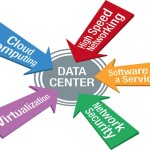A business must always be prepared to deal with the threats that endanger its existence and continued operation. If no coping plan is in place, a disaster may potentially cause devastating results.
Disaster Recovery Articles
With many years of professional IT experience, and training as a Certified Management Consultant, a Project Management Professional, a Professional Engineer and a Member, Business Continuity Institute, Steve Tower has the skills and abilities required to assist with even the most complex disaster recovery planning initiatives. Below, Steve discusses the necessary tools involved in setting up a disaster recovery plan and program.
Emergency Management: Why All Companies Should Have A Plan
In addition to Disaster Recovery (DR) plans and Business Continuity (BC) plans, companies can prepare to deal with potential disruptions by creating an Emergency Management plan. Whereas DR and BC plans address significant threats that endanger business viability, Emergency Management preparation focuses on a more common type of threat that can temporarily disrupt operations, but…
How to “Inventory” Relevant Risks & Threats
Before an organization is able to prepare for a prospective disaster, there has to be consensus among its stakeholders that threats are real and relevant. There must be a collective sense that the danger could legitimately affect the organization, and that readying to combat it is worth the time, money, and resources required. For a…
Risk & Threat Assessment: How Often & Who Gets Involved
A Risk and Threat Assessment is an optional, but complementary initiative to a Disaster Recovery Program. Some organizations will enlist a third party to size up all the potential dangers they face, while others “short cut” the process. It is certainly never a bad idea to have professionals conduct an assessment, but companies with a…
Setting Up a Recovery Site for Your Data Centre
As professional computing services continue the trend towards remote access, businesses are relying on more and more on thin clients and centralized processing. Rather than furnish every workstation with a fixed desktop, most companies prefer the efficiency and cost savings of hoteling, work location flexibility and portability by provisioning laptops and other mobile devices with…




